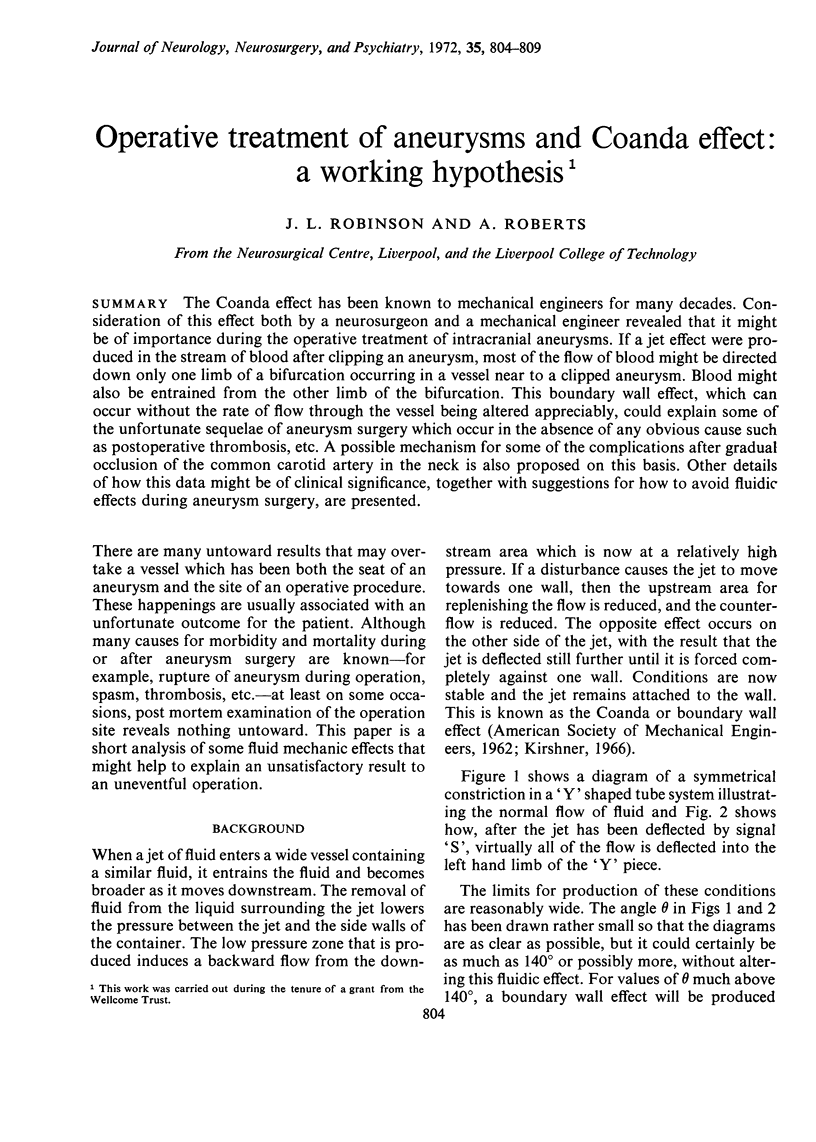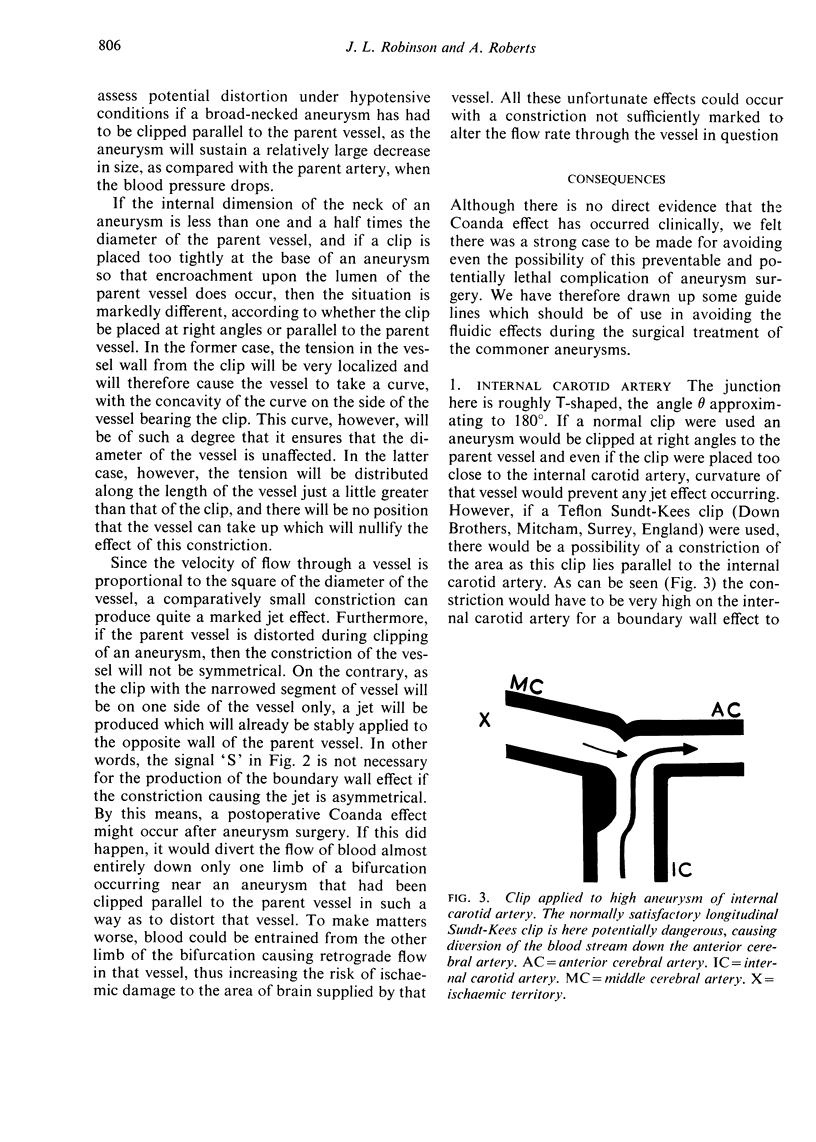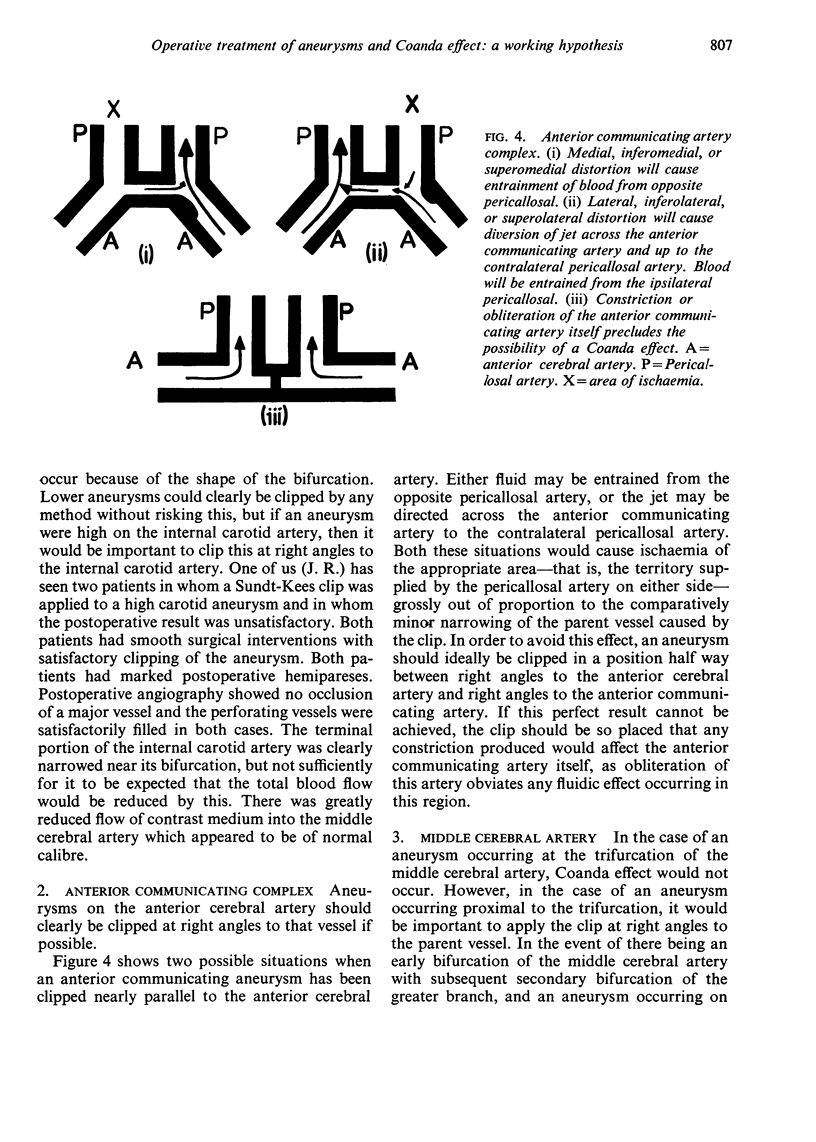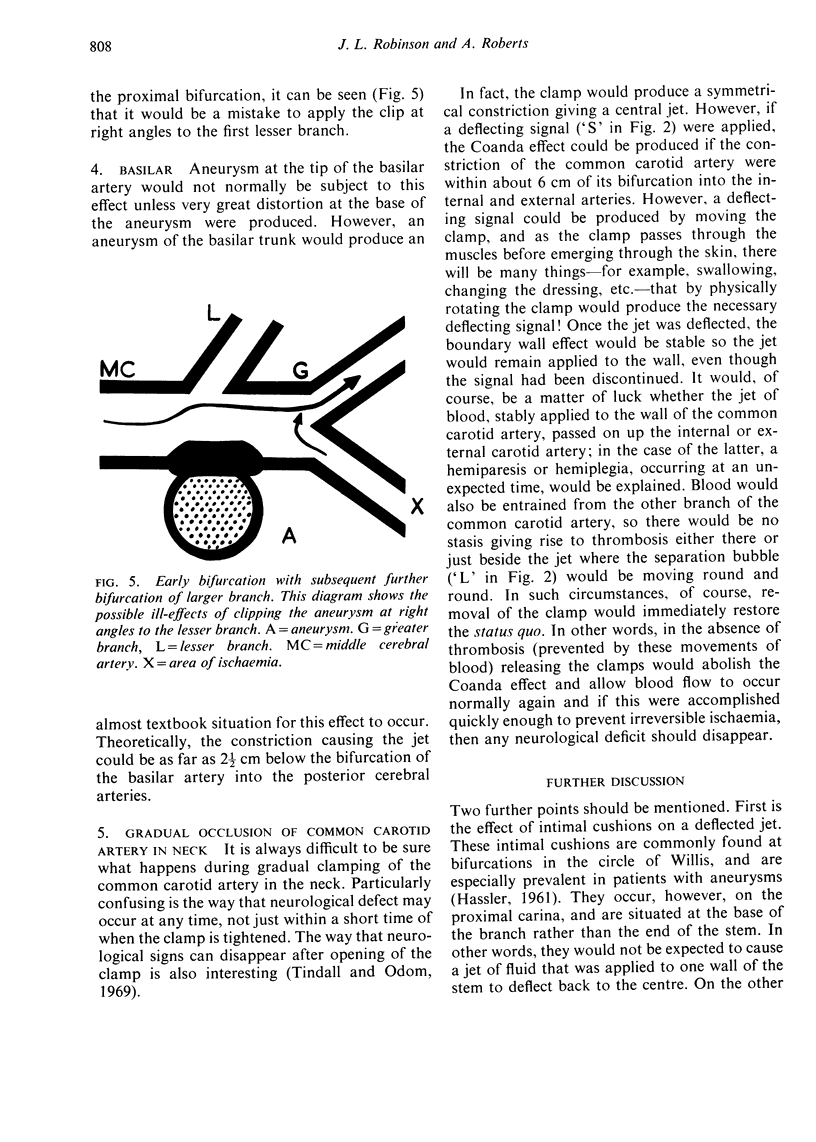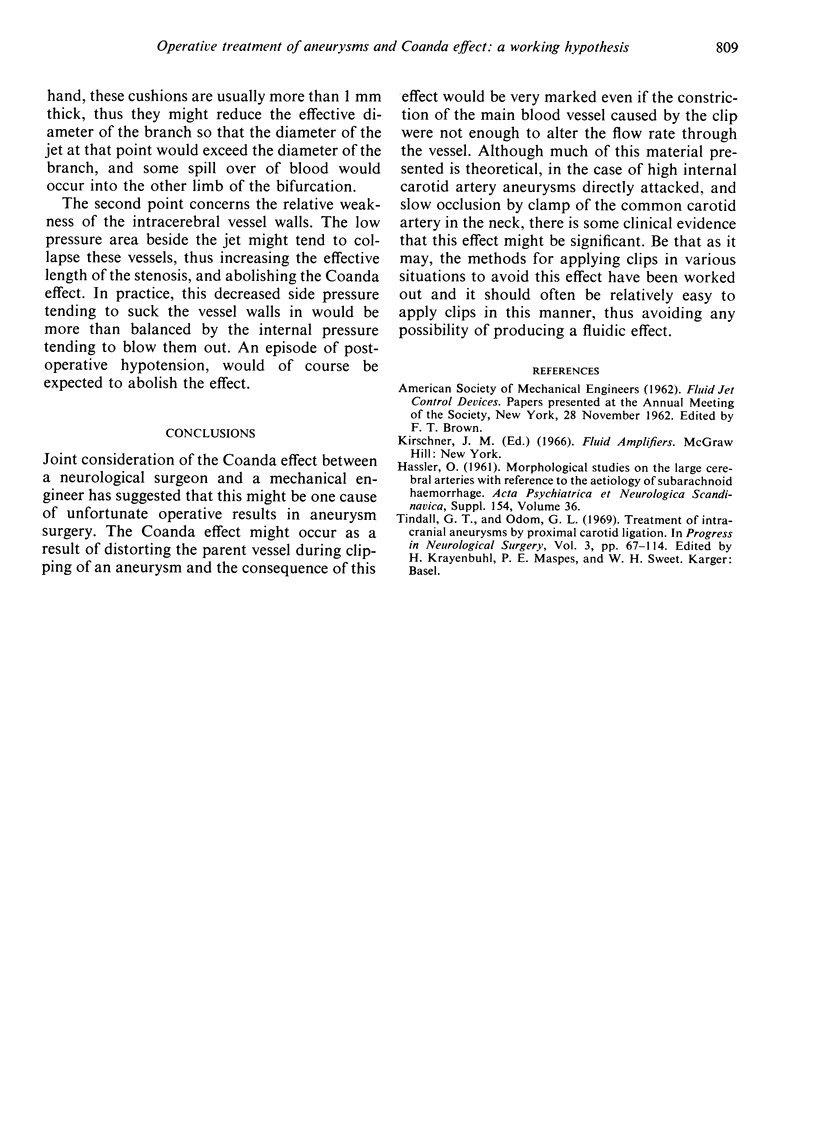Abstract
The Coanda effect has been known to mechanical engineers for many decades. Consideration of this effect both by a neurosurgeon and a mechanical engineer revealed that it might be of importance during the operative treatment of intracranial aneurysms. If a jet effect were produced in the stream of blood after clipping an aneurysm, most of the flow of blood might be directed down only one limb of a bifurcation occurring in a vessel near to a clipped aneurysm. Blood might also be entrained from the other limb of the bifurcation. This boundary wall effect, which can occur without the rate of flow through the vessel being altered appreciably, could explain some of the unfortunate sequelae of aneurysm surgery which occur in the absence of any obvious cause such as postoperative thrombosis, etc. A possible mechanism for some of the complications after gradual occlusion of the common carotid artery in the neck is also proposed on this basis. Other details of how this data might be of clinical significance, together with suggestions for how to avoid fluidic effects during aneurysm surgery, are presented.
Full text
PDF